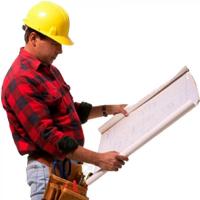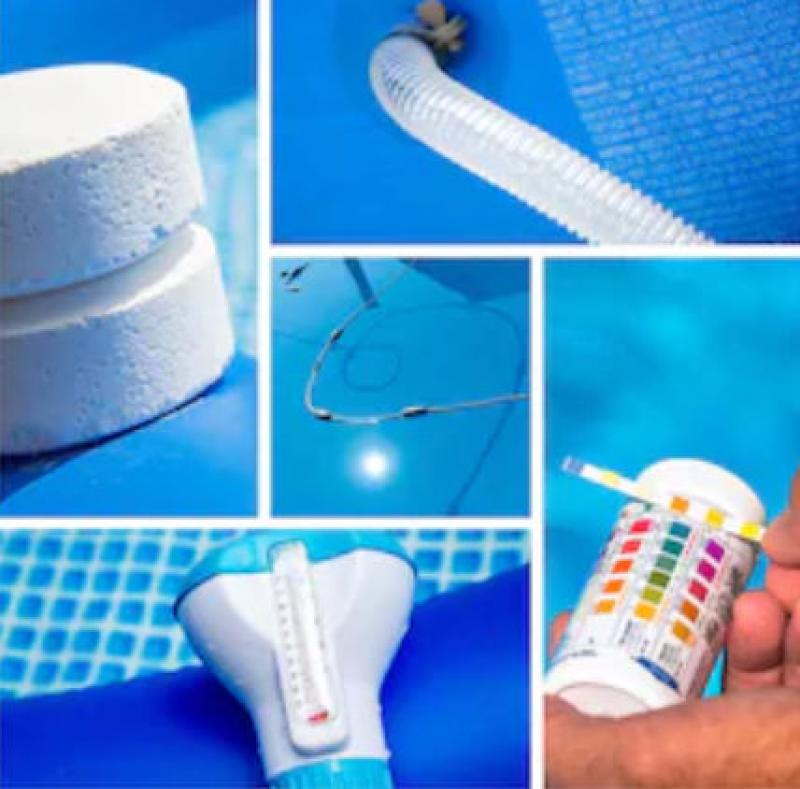How to Shock Your Swimming Pool
by Boris Dzhingarov on Oct 27, 2013
No, shocking your pool doesn’t involve some form of treatment with electricity. Pool shock is known as super chlorinating, and it’s a way to keep the water clean and safe. So what is involved, and how does the pool owner effectively use a shock treatment?
According to Wikihow.com, the basic process involves adding three to five times the normal amount of chlorine or chemical sanitizer to the pool water. This will significantly raise the chlorine level for a short time. The process will get rid of ineffective or inactive chlorine and will kill bacteria, along with anything organic in the pool. It will also increase the availability of effective chlorine. Shocking a pool is a good thing for a pool owner to know about – it should be part of the regular maintenance schedule for a family pool.
Be regular about it. What regular means will depend on how much use the pool gets, and how warm the water stays in the pool. The best way to check up on how frequently to use a shock treatment – do a home chlorine test and monitor the results. When the free available chlorine is below the recommended range, it’s time to use a shock treatment. It is recommended that a pool shock take place at least once a month. For a spa pool with really warm water, twice a month is better. Some experts recommend a shock treatment every week, especially if there has been a lot of rain, or for long periods of hot and sunny weather.
Do it after sundown. Since the UV rays in the sun will affect chlorine added to the water, it’s best to perform a shock treatment after the sun is down.
Prepare the pool shock chemical. First, the chemicals should be added to a bucket of water – always add the chemicals to water, not water to the chemicals. Make sure to stir up the water to ensure that the chemicals dissolve well.
Add the chemicals to the pool. While the filter is running, slowly add the water to the filtration system – in front of the return line fitting. Ask your pool professional about the proper place to add the chemicals if you’re unsure. The bucket of water containing the chemicals should be added slowly so that it properly circulates into the pool. When the bucket is about three-quarters empty, fill it up again, and stir the chemicals once more, then pour that bucket into the filtration system. This is to ensure that all the chemical granules go into the water, making the pool shock the most effective.
Let it be absorbed. It will take a while for the chlorine level to return to normal. Do a reading and make sure that the chlorine level is 3 PPM before re-entering the pool.
While a pool shock treatment sounds like a lot of work and effort, the pool owner who neglects his pool might find that a nasty layer of green algae has developed. Avoiding that scenario is a great reason for regular maintenance with shock treatments.
David Stanfield enjoys writing freelance articles for InTheSwim.com. He also enjoys time spent with his family, walking with his German Shepherd Rex, and his guilty pleasure – watching Survivor.
Popular Articles
Three Places to Spend Money on the Exterior of Your Home
When you have the exterior of your home remodeled, you are investing, time, energy and convenience into the project and you want to make sure that...
105731 Views
Homemade Headboards-Make an Upholstered or Wooden Headboard
Homemade headboards can add a lot of personality to any bedroom. They can be coordinated with existing furniture and room decor or they can be the...
80508 Views
When to Use a Brush, Roller or Sponge Brush
Brushes are a good choice for painting trim and woodwork. They are also useful for cutting in the edges around the top and bottom edges and corners...
73129 Views
Creating a Cottage Kitchen with Bead Board
Kitchen decor can range from modern and bold to elegant and elaborate by using strategic kitchen pieces. One of the most popular decorating trends...
58913 Views
Gas Fireplace Diagnostics and Troubleshooting
Follow these steps for diagnosing and troubleshooting Gas Fireplaces repairs. For the average DIYer, this may seem intimidating, depending on the...
35900 Views
Latest Articles
Why Professional Heat Pump Installation is Key to Maximizing Efficiency and Longevity
Heat pumps are a highly efficient means of heating and cooling homes, reducing energy costs and contributing to environmental sustainability. To...
on Dec 15, 2025
Hydro Jetting Services: Unclog Your Pipes with the Power of Water
When faced with stubborn clogs and slow drains, conventional solutions often fall short. But with the innovation of hydro jetting services,...
on Dec 15, 2025
Why Professional Boiler Repair is Essential for Home Safety and Comfort
Maintaining a warm and safe home environment is paramount for any homeowner. Your home's boiler system plays a critical role in this, but what...
on Nov 5, 2025
How to Keep Your Home Warm in the Winter
How to Keep Your Home Warm in the WinterAs winter approaches, keeping your home warm becomes a priority for comfort and health. Efficient heating...
on Oct 29, 2025
Why Reliable Furnace Repair is Essential for Winter Comfort
As the cold season approaches, homeowners recognize the critical role that a well-functioning furnace plays in ensuring a warm and cozy living...
on Oct 29, 2025
Featured Articles
What Type of Licensed Contractor Should You Hire?
on Feb 28, 2017
Hire Contractors / Estimates

Looking for a specialty project? There are many types of contractors available for your home improvement needs. Finding the right type of...
Actions
Top Categories
- Garden / Landscaping / Patio — 264
- Kitchen / Bathrooms — 240
- Real Estate / Finance — 203
- Appliance / Repair — 186
- Interior Design / Decor — 184
- HVAC / Air Conditioning — 150
- Cleaning / Maintenance — 144
- Improvements / Remodeling — 131
- Plumbing / Basements — 120
- Floors / Tile / Hardwood — 116
- Safety / Security — 114
- Doors / Garages — 113
Articles Archive
More DIY Articles
Fixing the Top 5 Most Common Plumbing Problems
When it comes to plumbing, you are bound to face some issues at a certain point in time. Trivial problems here and there will arise to niggle at...
Don’t Overlook These Household Maintenance Tips for Avoiding Costly Leaks
It goes without saying that household flooding and water damage from plumbing and other household issues are time-consuming and costly to deal...
5 Tips on How to Increase House Values
If you are looking for ways to increase the value of your property and make potential buyers weak at the knees, these five handy tips on how to...
5 Small Upgrades that can Drastically Improve your Curb Appeal
First impressions matter. Whether you are going on a blind date or trying to sell your home, a strong first impression can make all the difference.
How to Diagnose and Fix a Frosty Air Conditioner
You are in your home in the middle of the summer with the air conditioning on full blast, but you notice that it is definitely not working...

